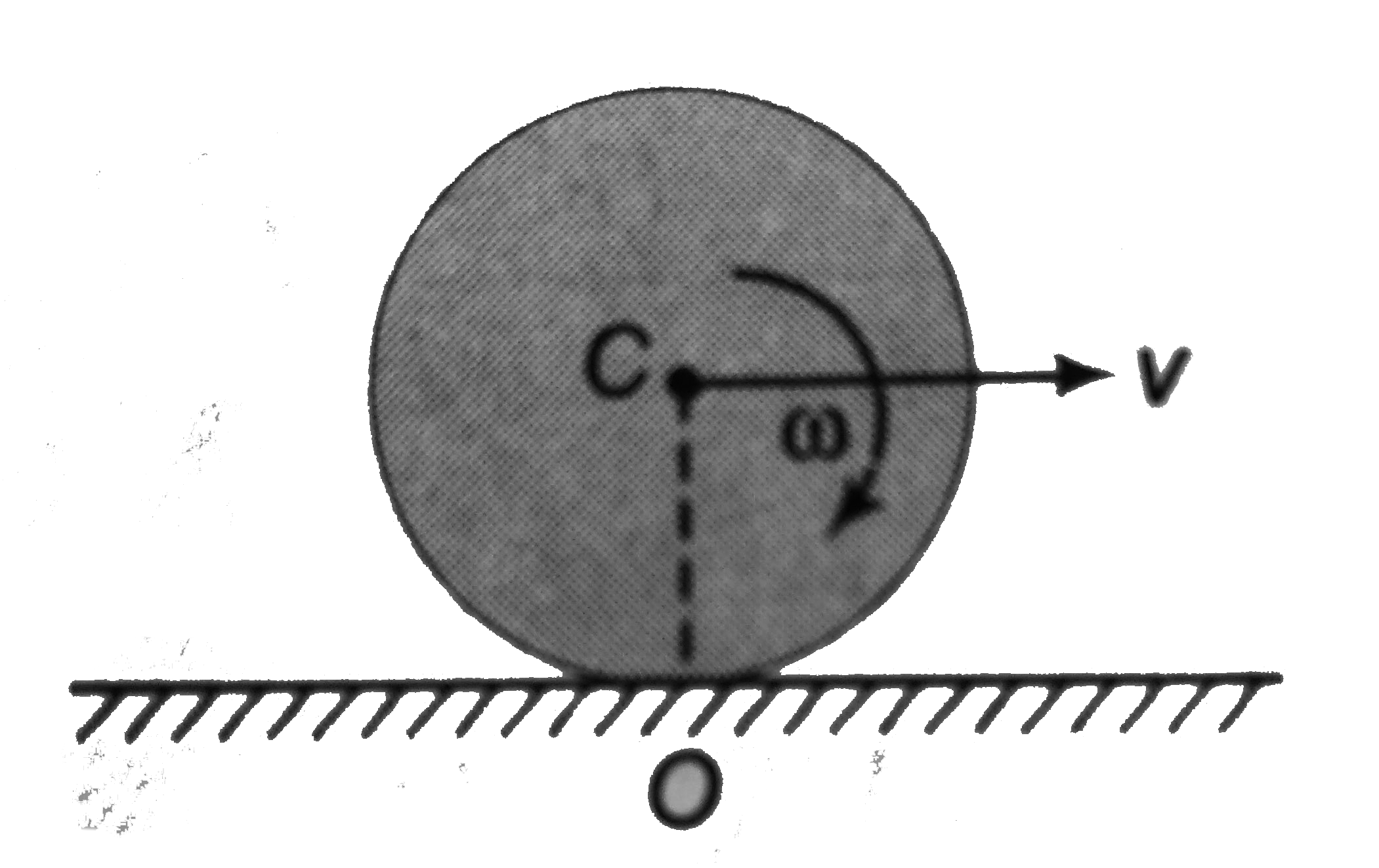A : When a ring moves in pure rolling condition on ground it has 50% translational and 50% rotational energy.
R : KEtransKErot=12MV212lω2=12MV212(MR2)V2R2=1:1
If both Assertion & Reason are true and the reason is the correct explanation of the assertion,
If both Assertion & Reason are true but the reason is not the correct explanation of the assertion,
If Assertion is true statement but Reason is false,
If both Assertion and Reason are false statements,
The correct Answer is:A
To solve the problem, we need to analyze the kinetic energy of a ring that is rolling without slipping. We will derive the translational and rotational kinetic energies and show that they are equal in a pure rolling condition.
1. Identify the Kinetic Energies:
- The translational kinetic energy (KE_trans) of the ring is given by:
KEtrans=12mv2
- The rotational kinetic energy (KE_rot) of the ring is given by:
KErot=12Iω2
- For a ring, the moment of inertia I about its center is:
I=mR2
2. Relate Angular Velocity and Linear Velocity:
- In pure rolling motion, the relationship between linear velocity v and angular velocity ω is:
v=Rω
- Rearranging gives:
ω=vR
3. Substitute ω in the Rotational Kinetic Energy:
- Substitute ω into the expression for KErot:
KErot=12Iω2=12(mR2)(vR)2
- Simplifying this gives:
KErot=12mR2⋅v2R2=12mv2
4. Compare the Kinetic Energies:
- Now we have:
KEtrans=12mv2
KErot=12mv2
- Therefore, we can see that:
KEtrans=KErot
5. Calculate the Total Kinetic Energy:
- The total kinetic energy (KE_total) is:
KEtotal=KEtrans+KErot=12mv2+12mv2=mv2
6. Find the Ratios:
- The ratio of translational kinetic energy to rotational kinetic energy is:
KEtransKErot=12mv212mv2=1
Conclusion:
- Since both the translational and rotational kinetic energies are equal, we conclude that in pure rolling conditions, a ring has 50% of its kinetic energy as translational and 50% as rotational. Thus, both statements A and R are correct.
- The translational kinetic energy (KE_trans) of the ring is given by:
KEtrans=12mv2
- The rotational kinetic energy (KE_rot) of the ring is given by:
KErot=12Iω2
- For a ring, the moment of inertia I about its center is:
I=mR2
- In pure rolling motion, the relationship between linear velocity v and angular velocity ω is:
v=Rω
- Rearranging gives:
ω=vR
- Substitute ω into the expression for KErot:
KErot=12Iω2=12(mR2)(vR)2
- Simplifying this gives:
KErot=12mR2⋅v2R2=12mv2
- Now we have:
KEtrans=12mv2
KErot=12mv2
- Therefore, we can see that:
KEtrans=KErot
- The total kinetic energy (KE_total) is:
KEtotal=KEtrans+KErot=12mv2+12mv2=mv2
- The ratio of translational kinetic energy to rotational kinetic energy is:
KEtransKErot=12mv212mv2=1
- Since both the translational and rotational kinetic energies are equal, we conclude that in pure rolling conditions, a ring has 50% of its kinetic energy as translational and 50% as rotational. Thus, both statements A and R are correct.
Similar Questions
Knowledge Check
- Question 1 - Select One
The value of 1r21+1r22+1r32+1r2, is
A0Ba2+b2+c2Δ2CΔ2a2+b2+c2Da2+b2+c2Δ2 - Question 2 - Select One
1r21+1r22+1r23+1r2=
Aa2+b2+c2s2BΣa2S2C4RD4R - Question 3 - Select One or More
Which of the following solutions are isotonic w.r.t. an aqueous NaCl solution having molarity 0.2M and 50% dissociation?
A0.3M aqueous glucose solutionB0.15M aqeous Na2SO4 solution showing complete dissociation.C0.15M aqueous KHF2 solution showing complete dissociation.D0.1M aqueous BaCl2 solution showing 80% dissociatio/n
Check the dimensional consistency of the relations :
(i) S=ut+12at2
(ii) 12mv2=mgh.View SolutionObtain an expression for total kinetic energy of a rolling body in the form 12MV2[1+K2R2].
View SolutionFor example , at the time t=0 , the particle is at its mean position, then at which times, the particle will have potential energy 50% of its total energy within t=0 to t=T ?
Hint : When PE is 50% of total energy 12kx2=12.12kA2View Solution50∑r=1[149+r−12r(2r−1)]=
View SolutionValue of 1r21+1r22+1r23+1r2 is :
View Solution


